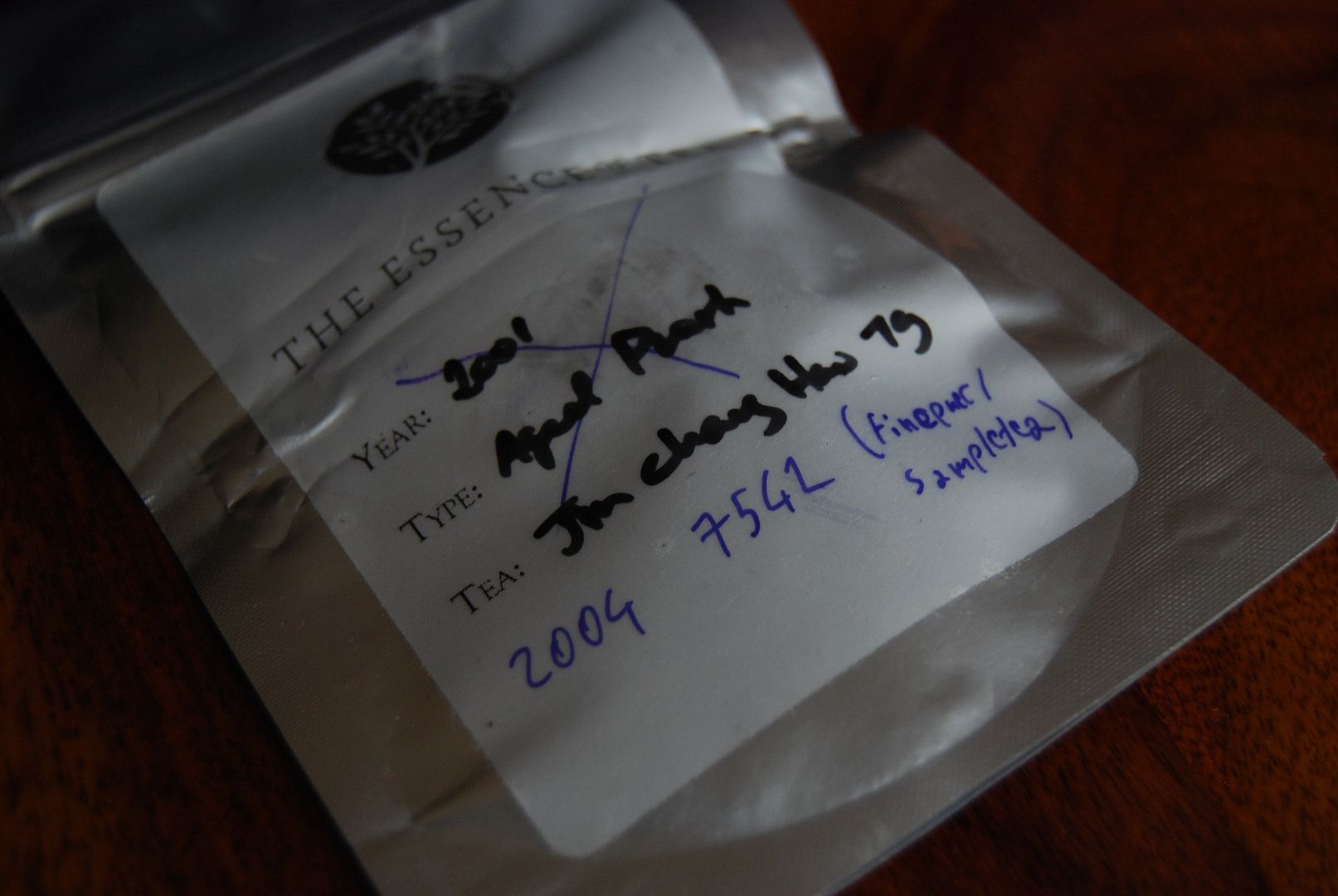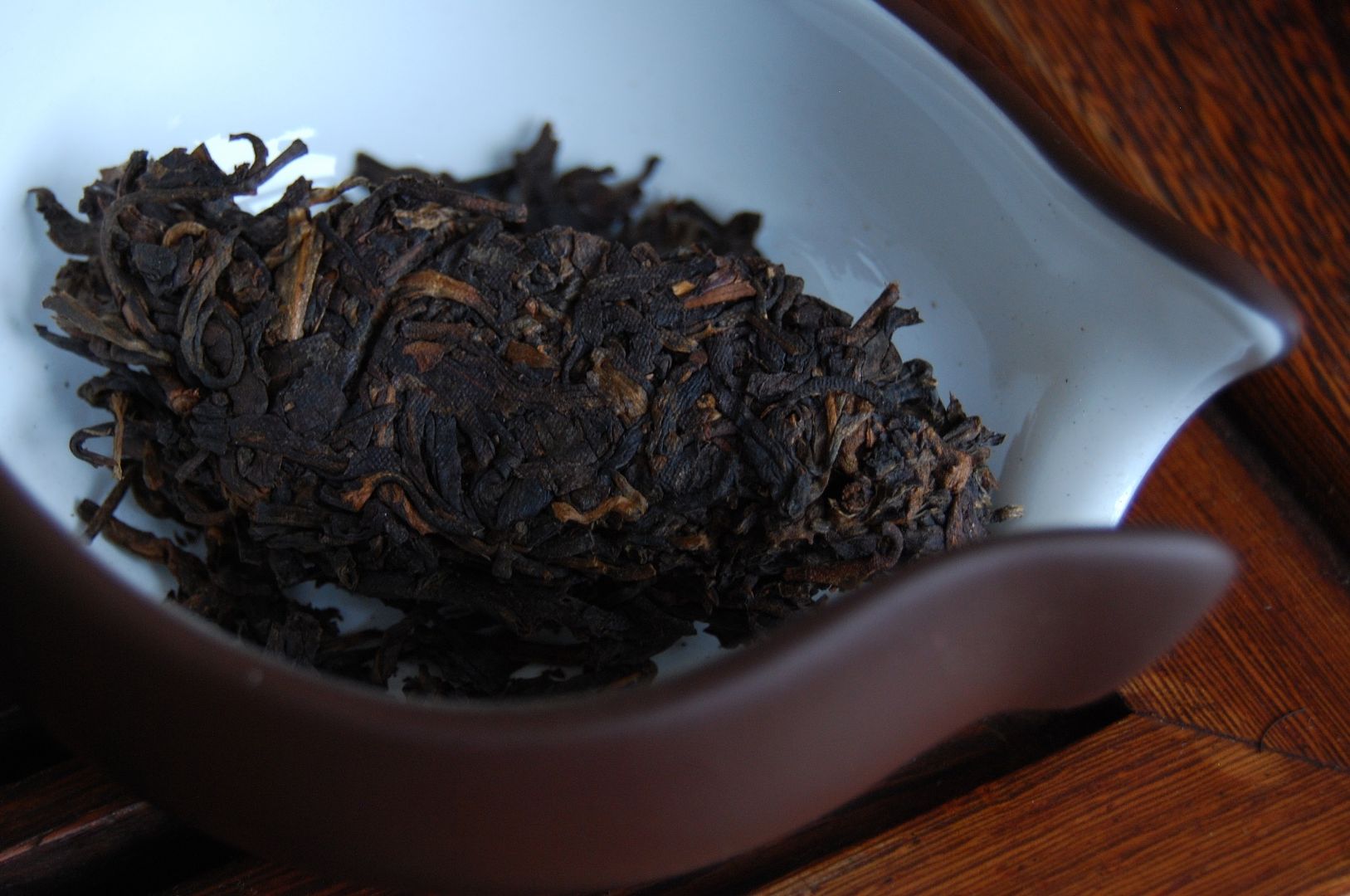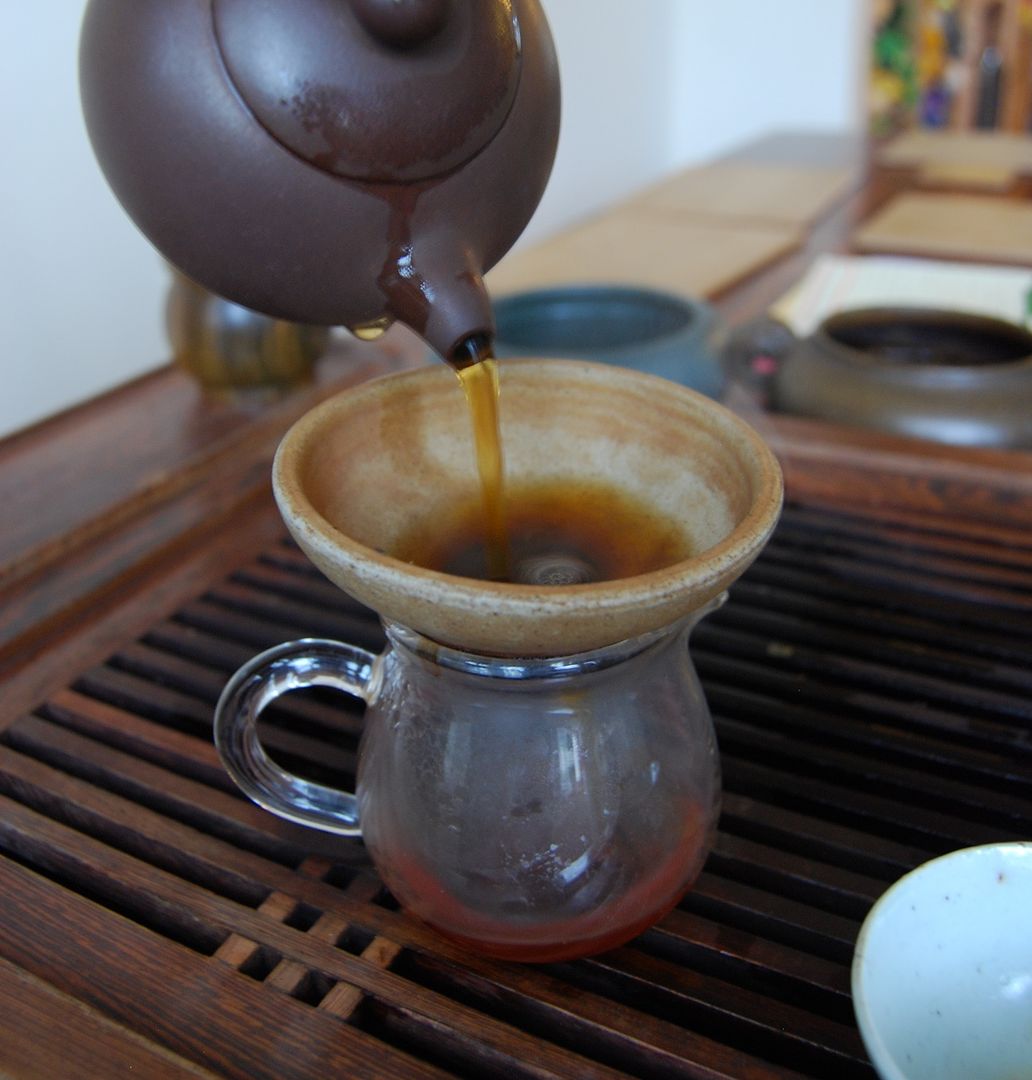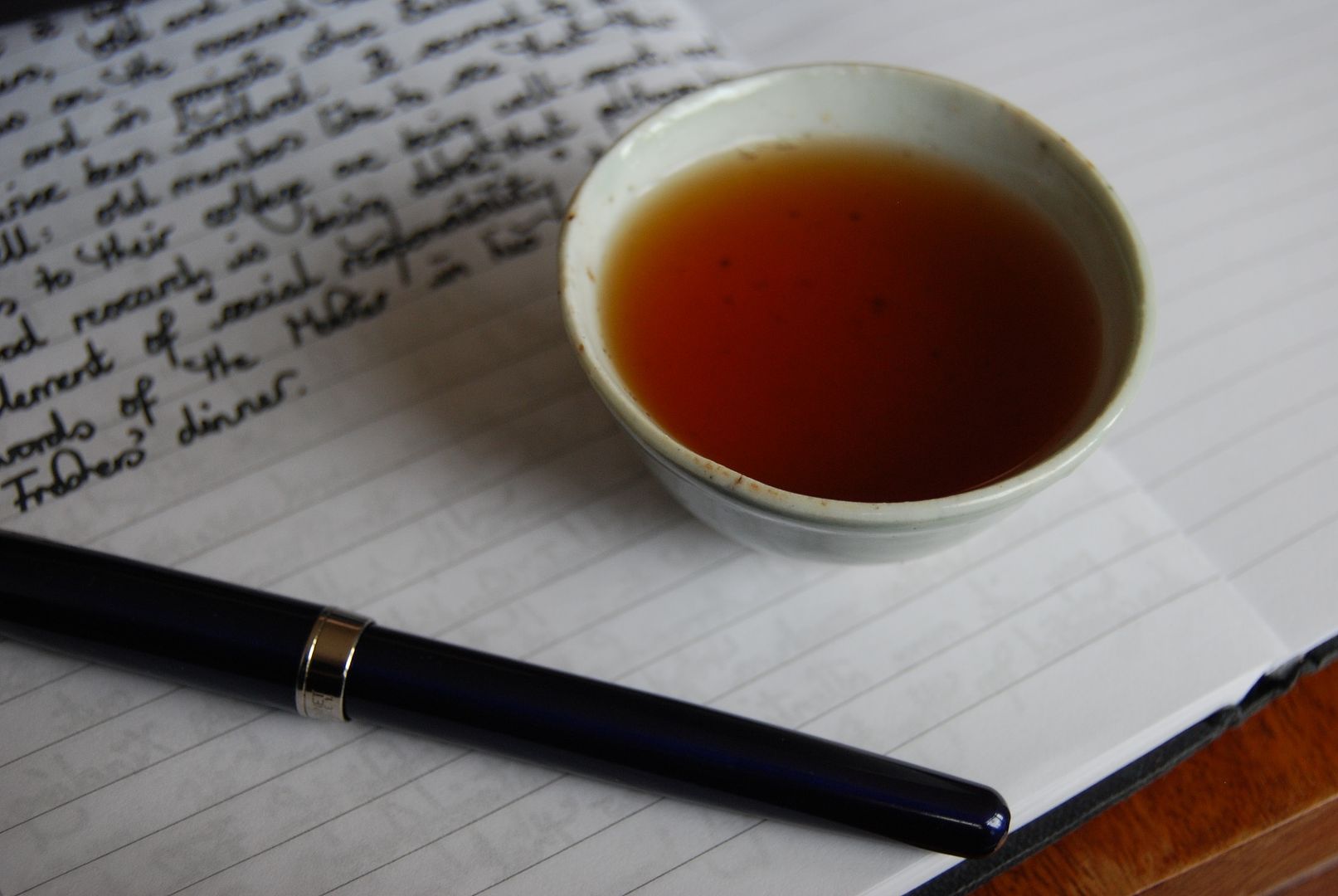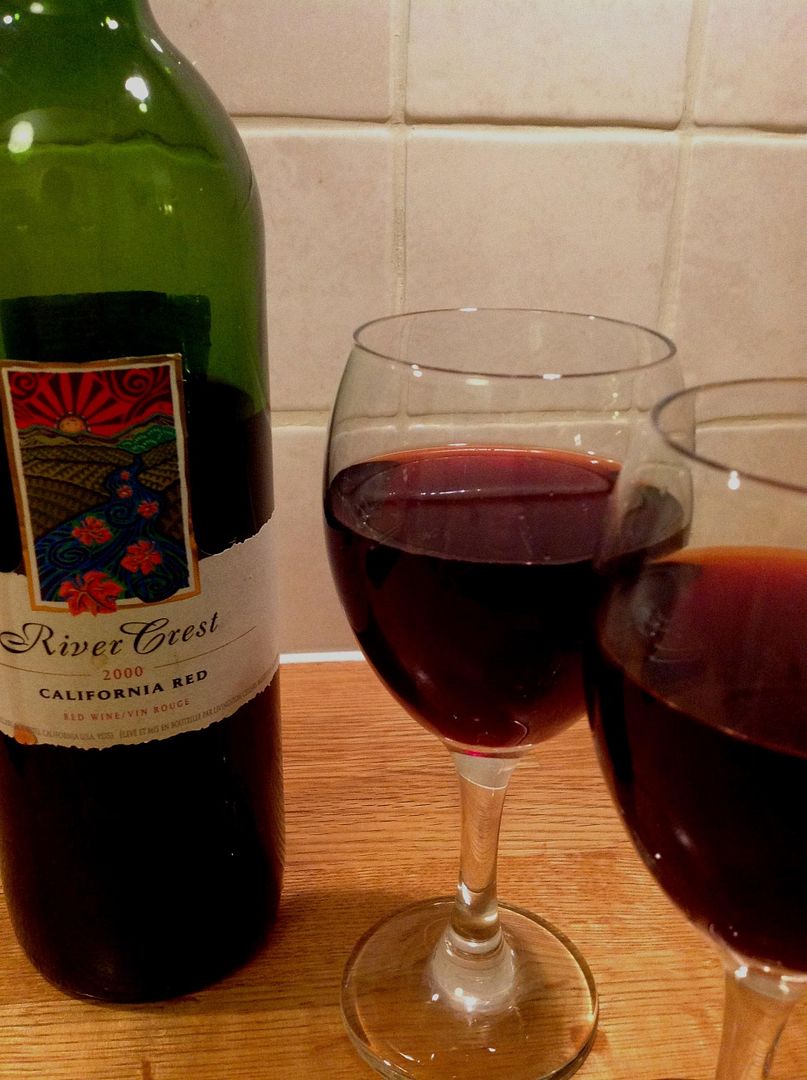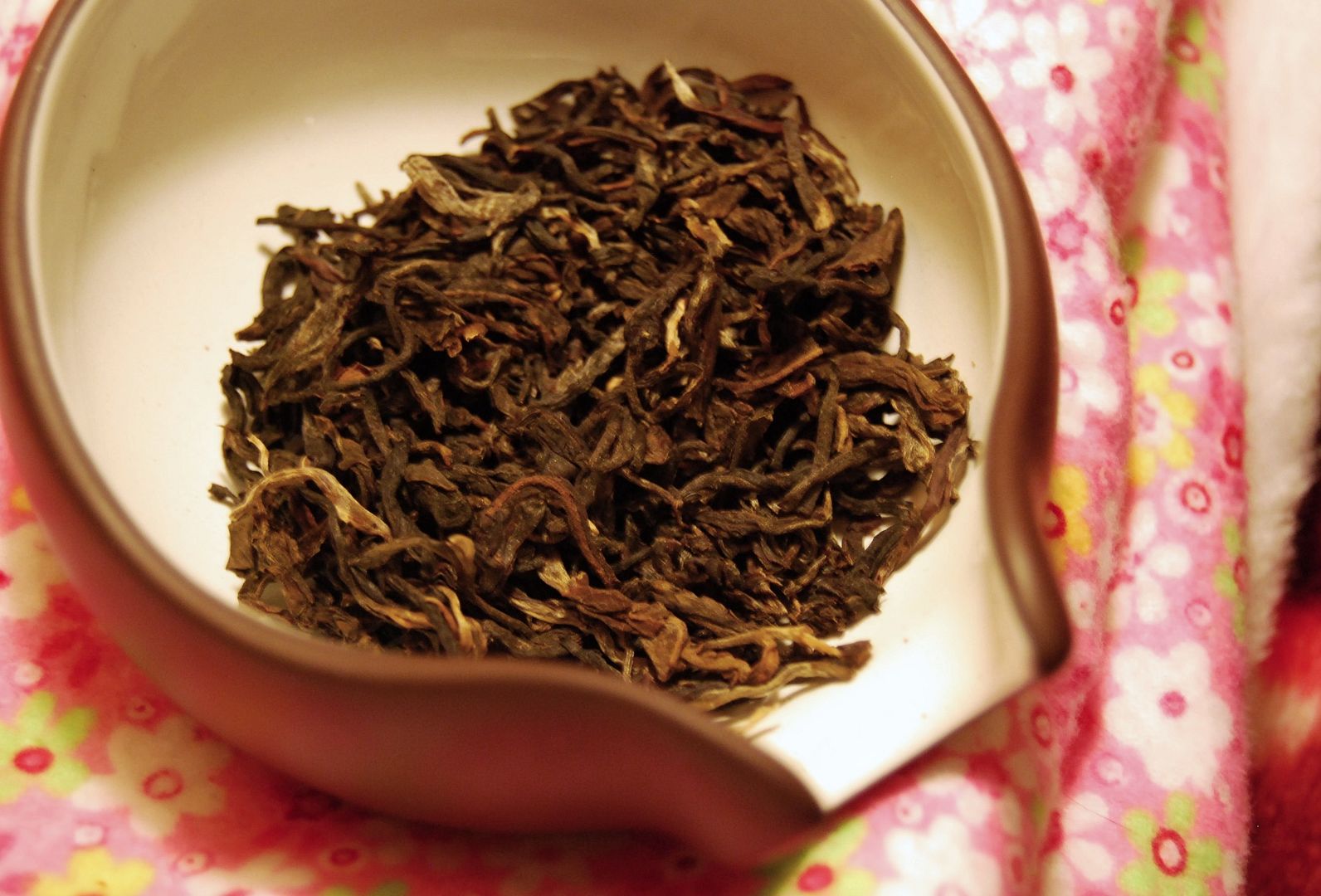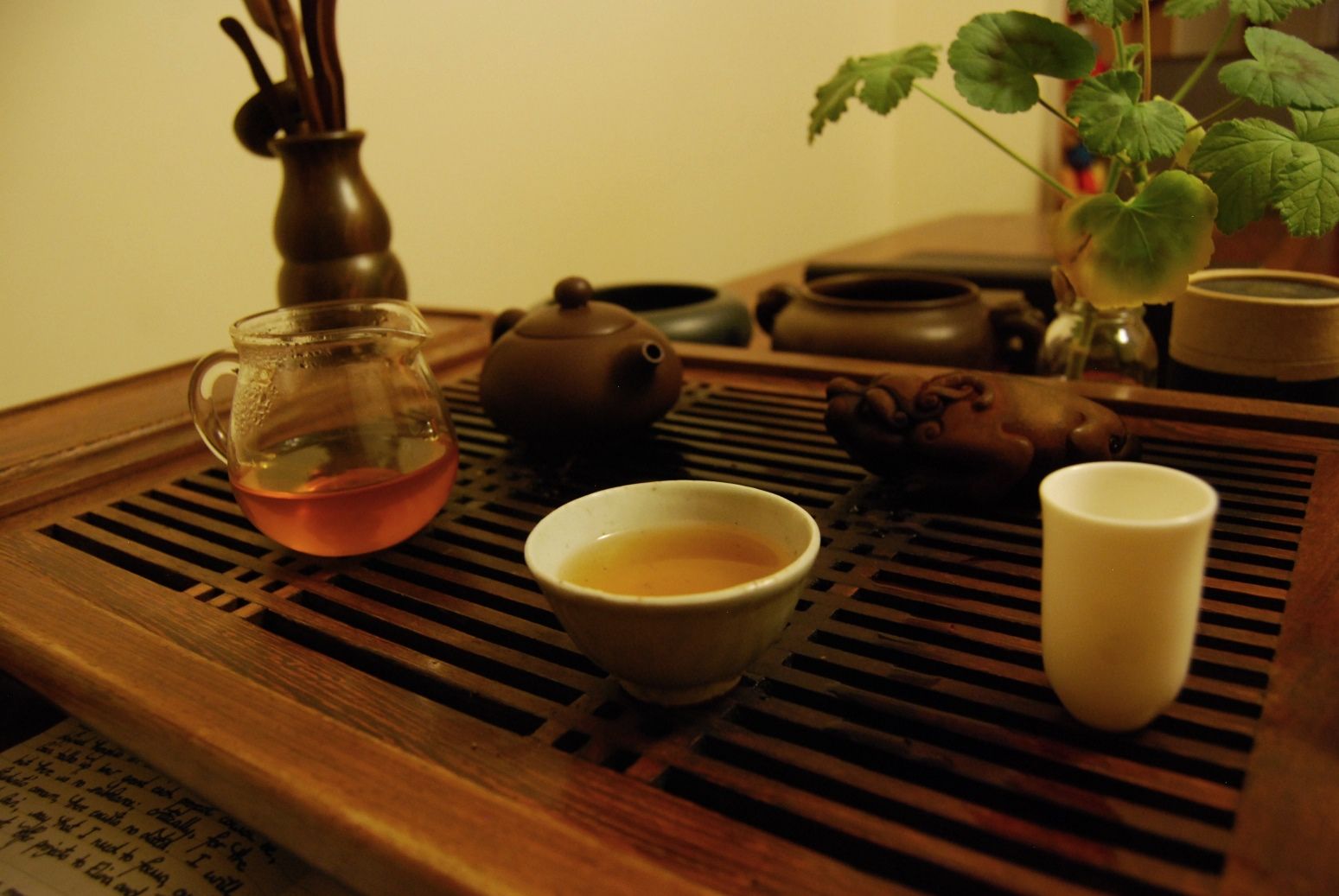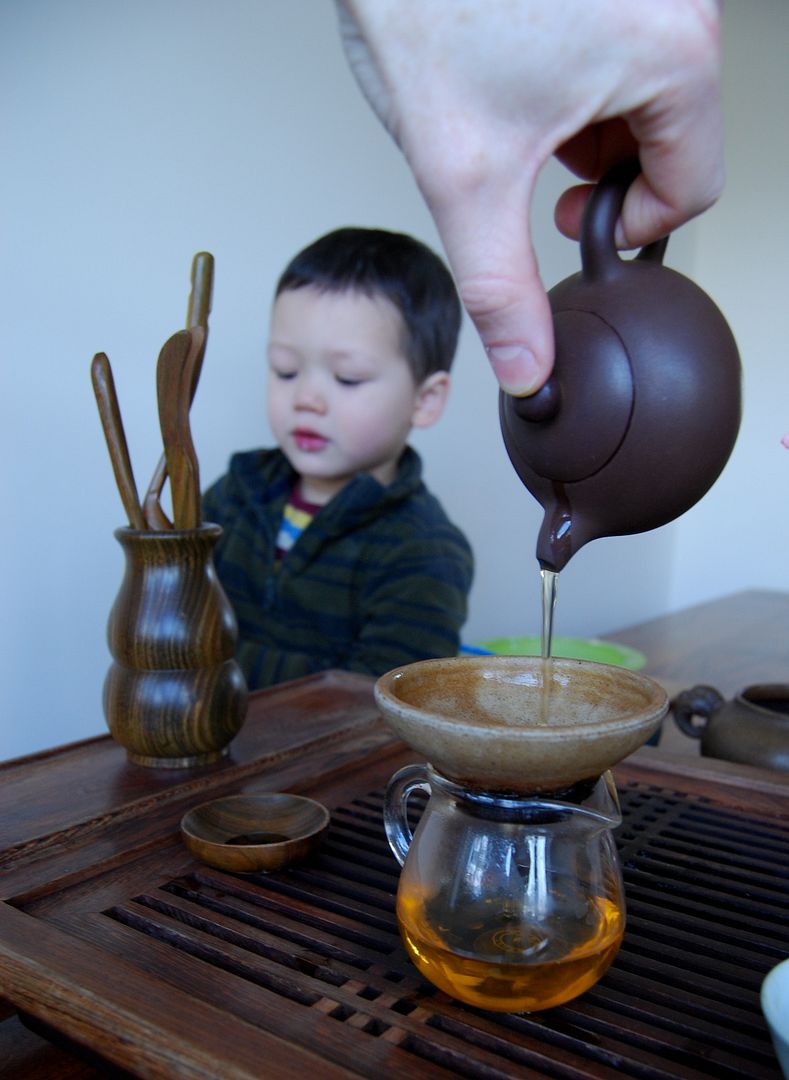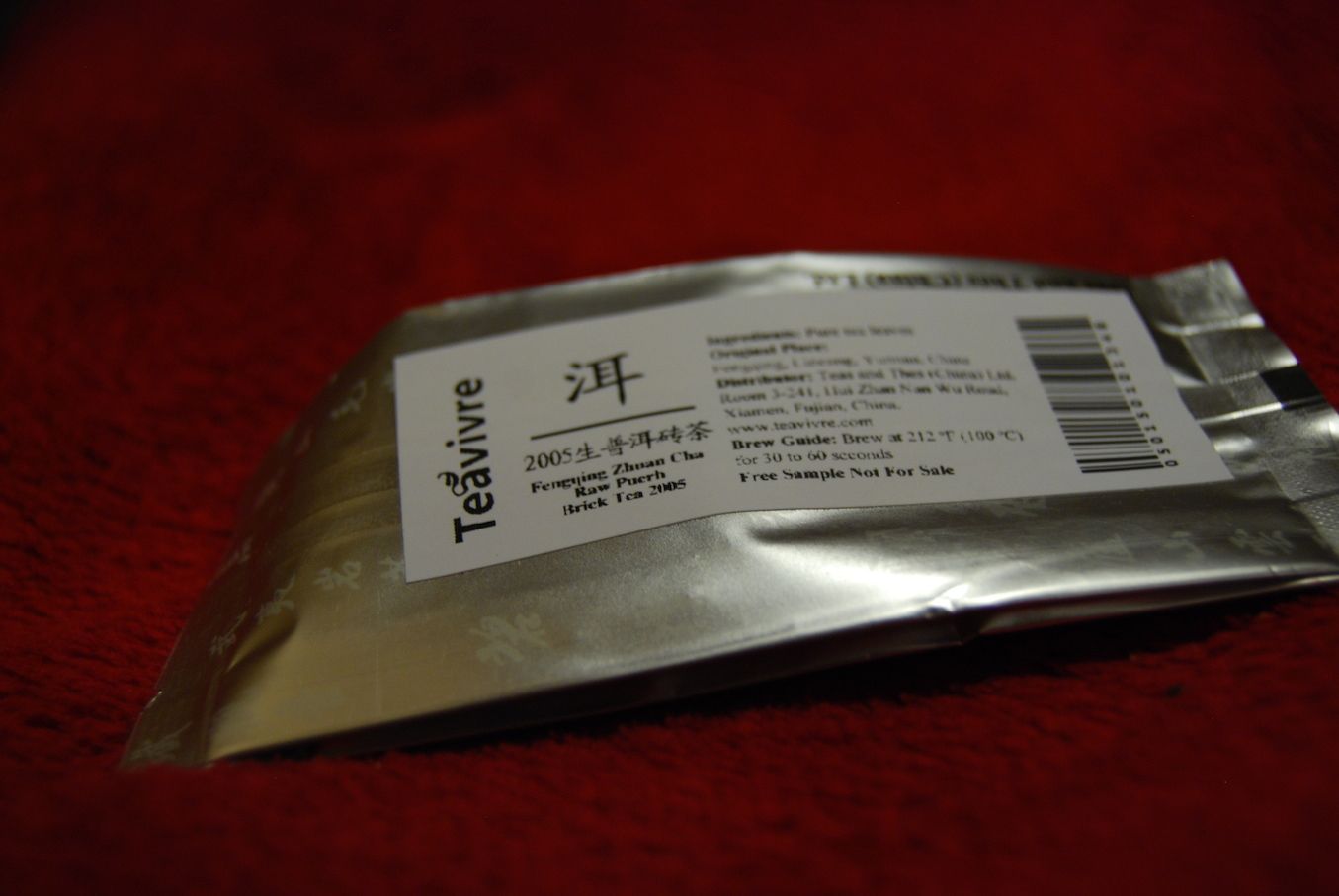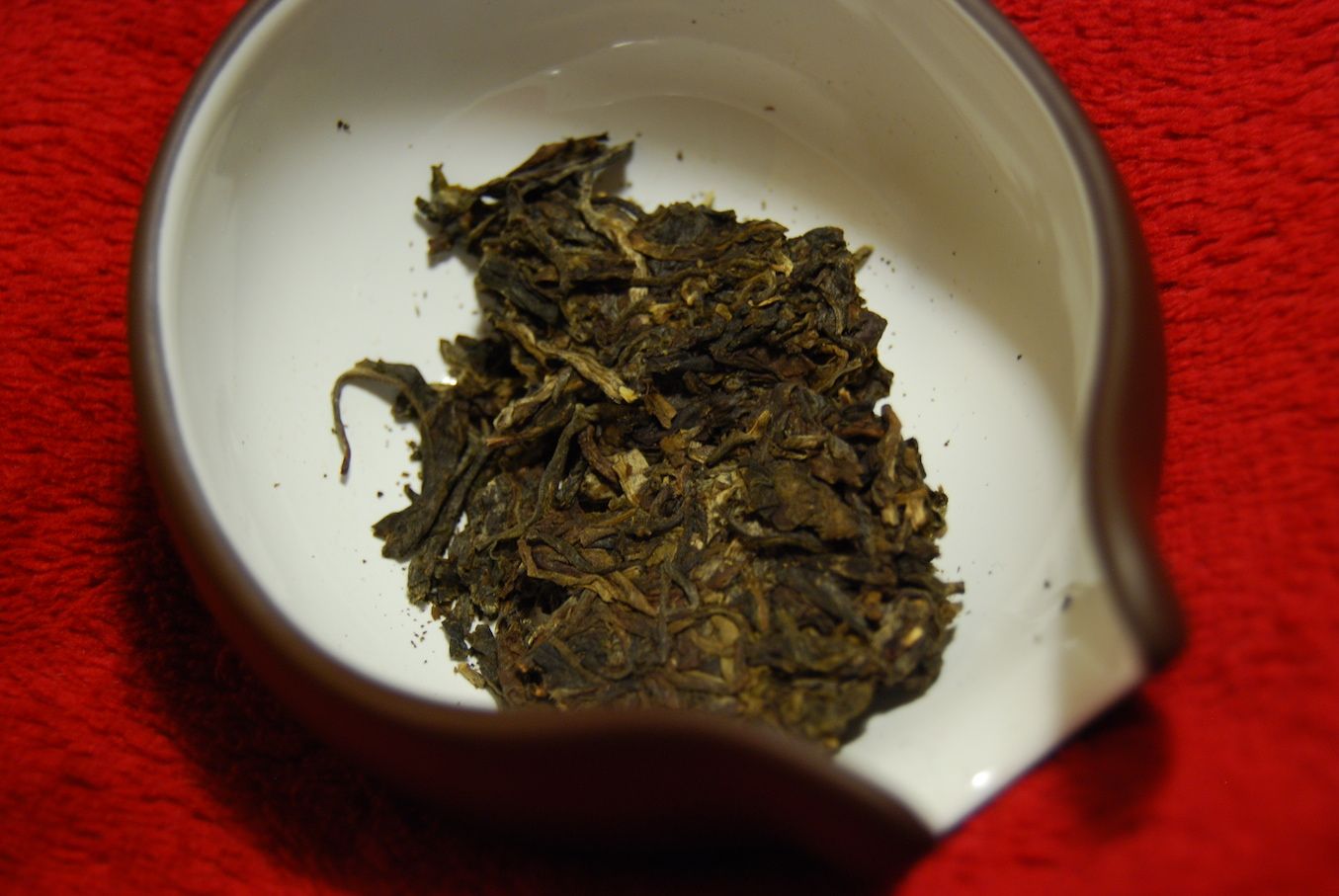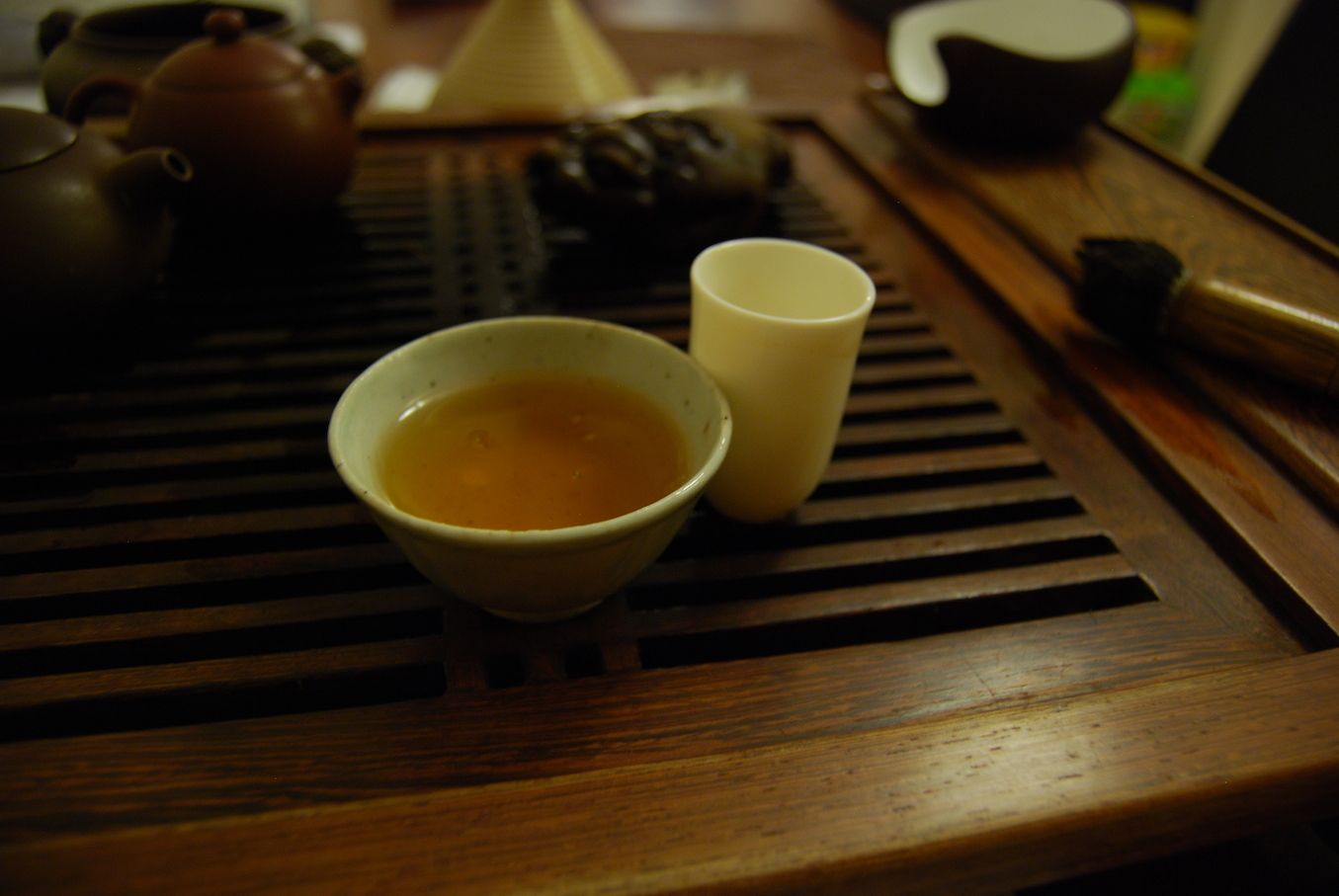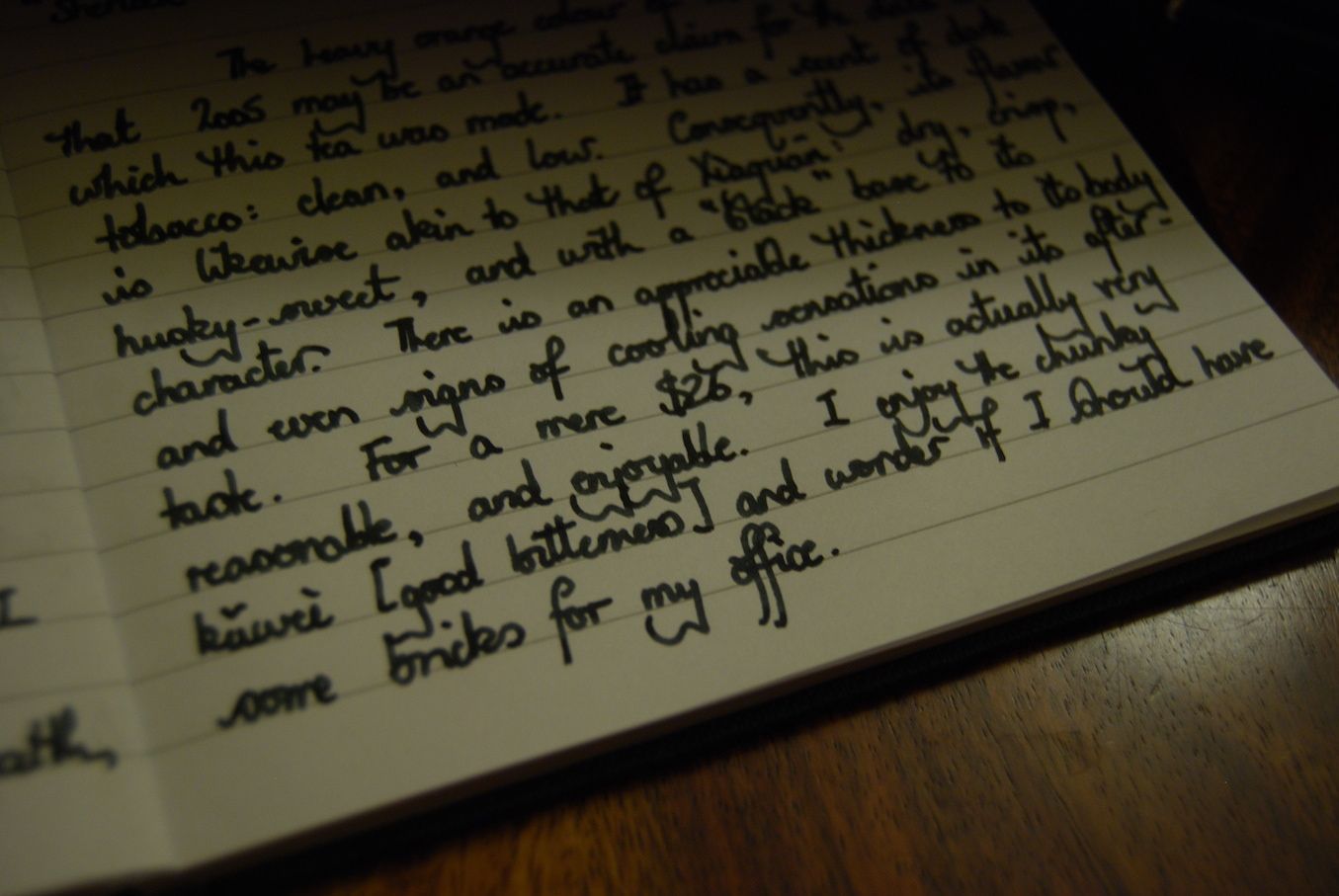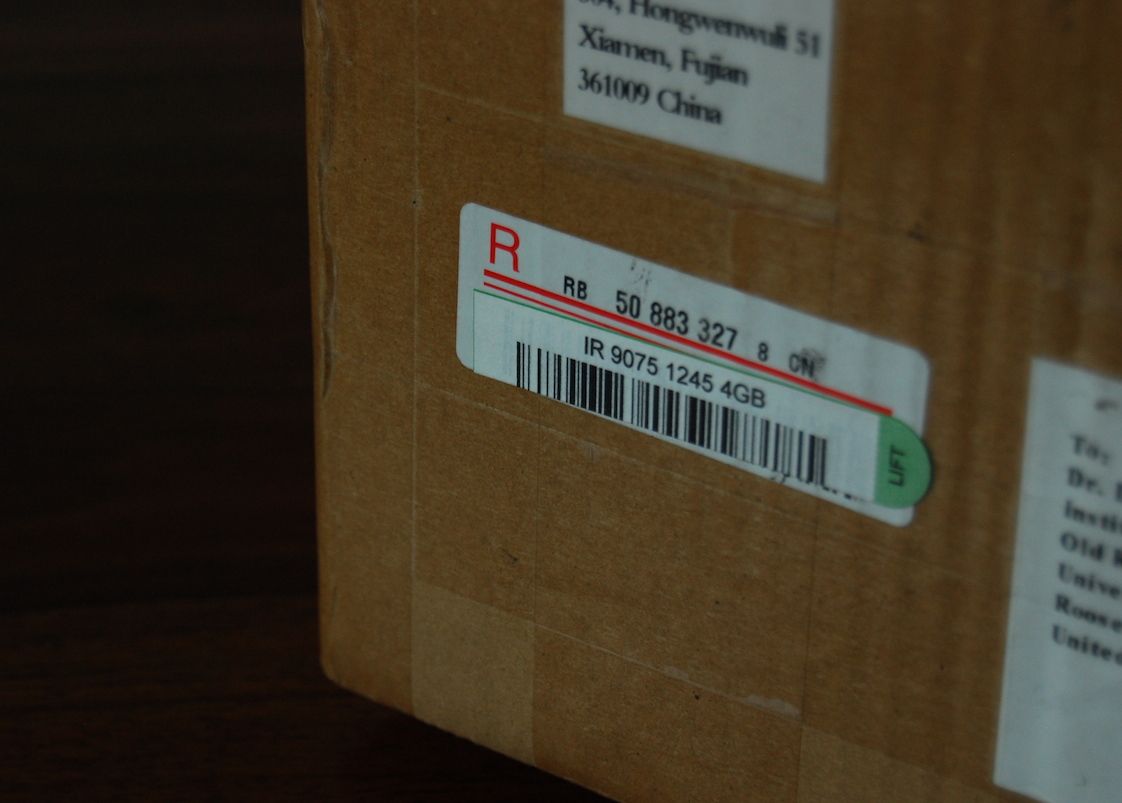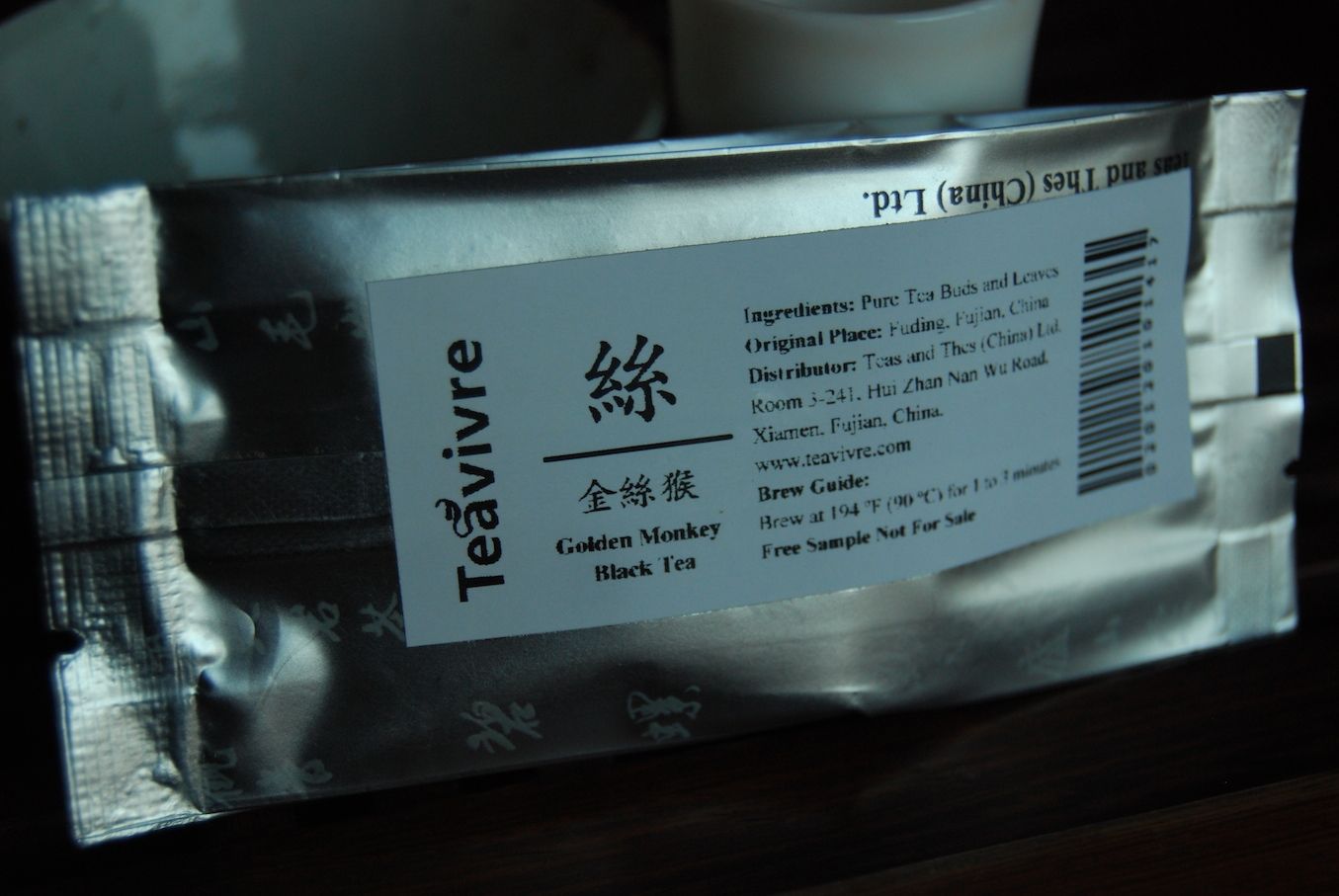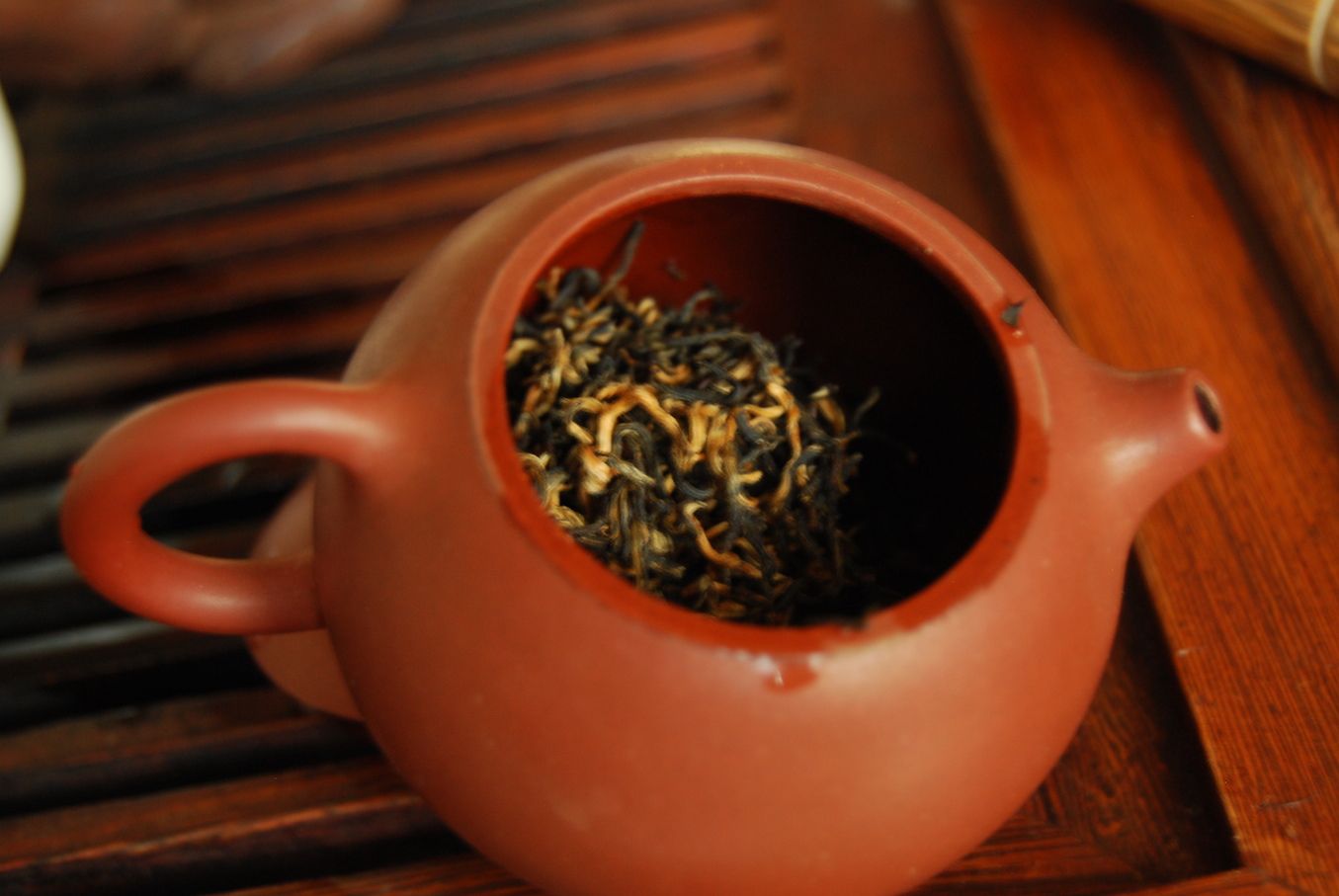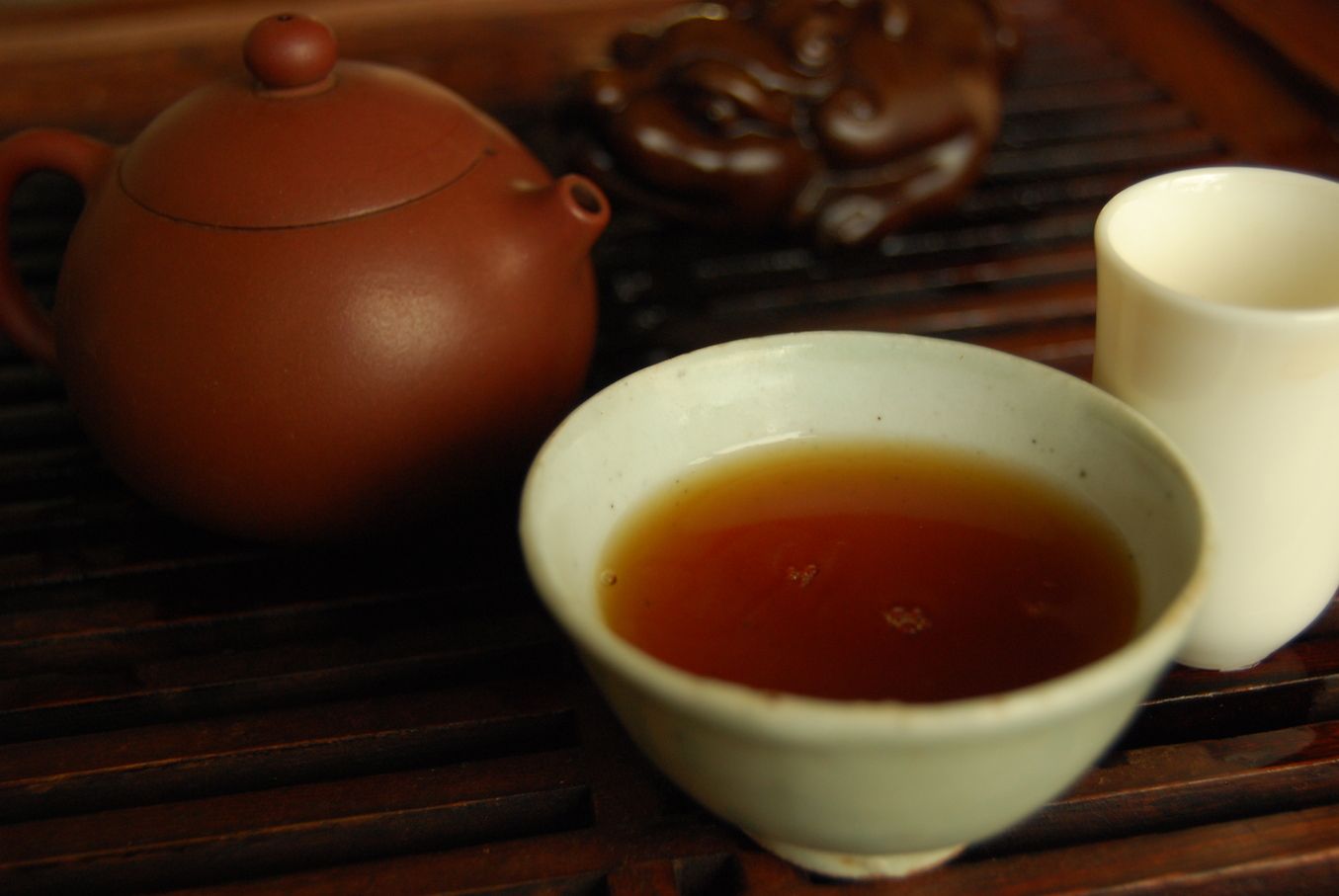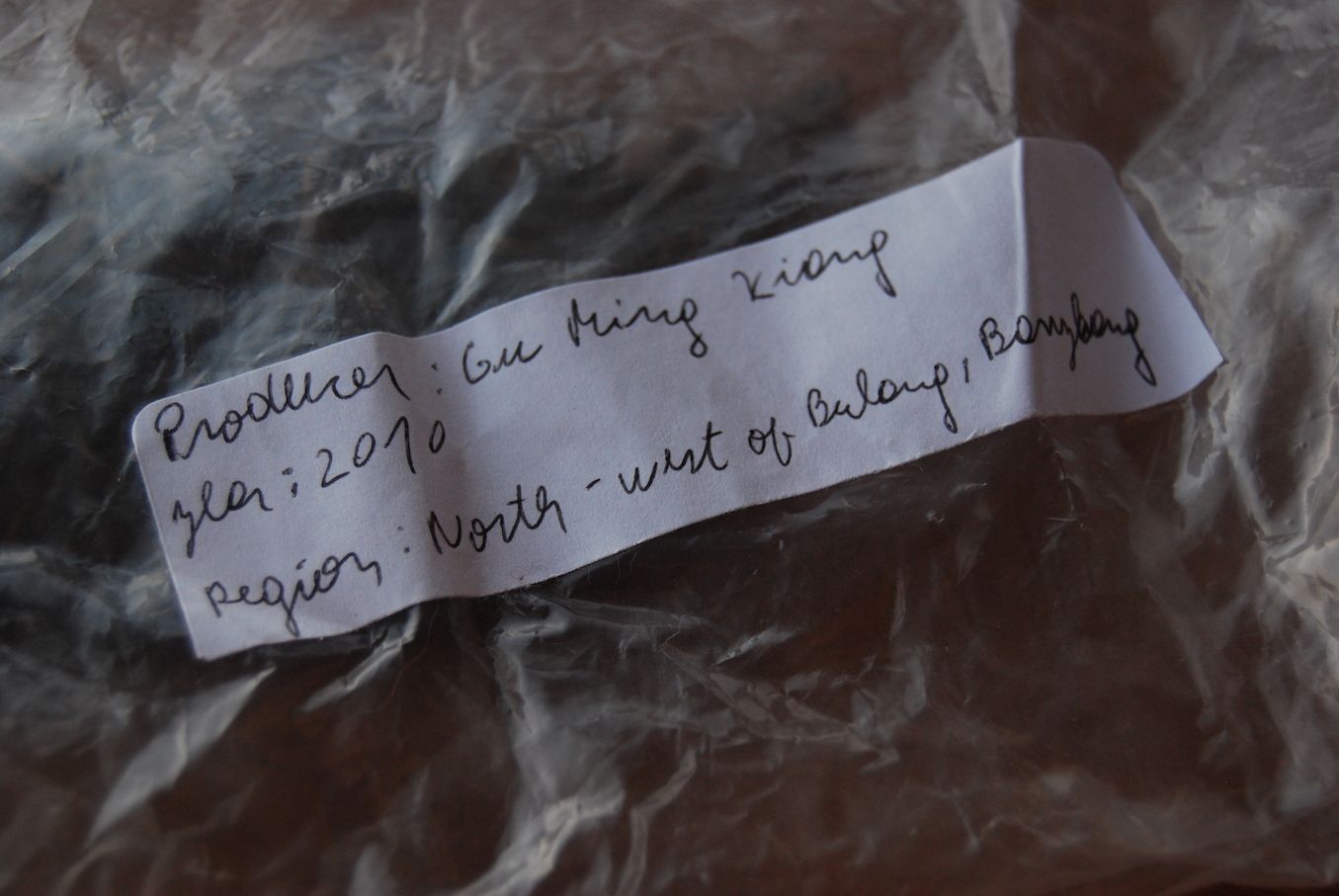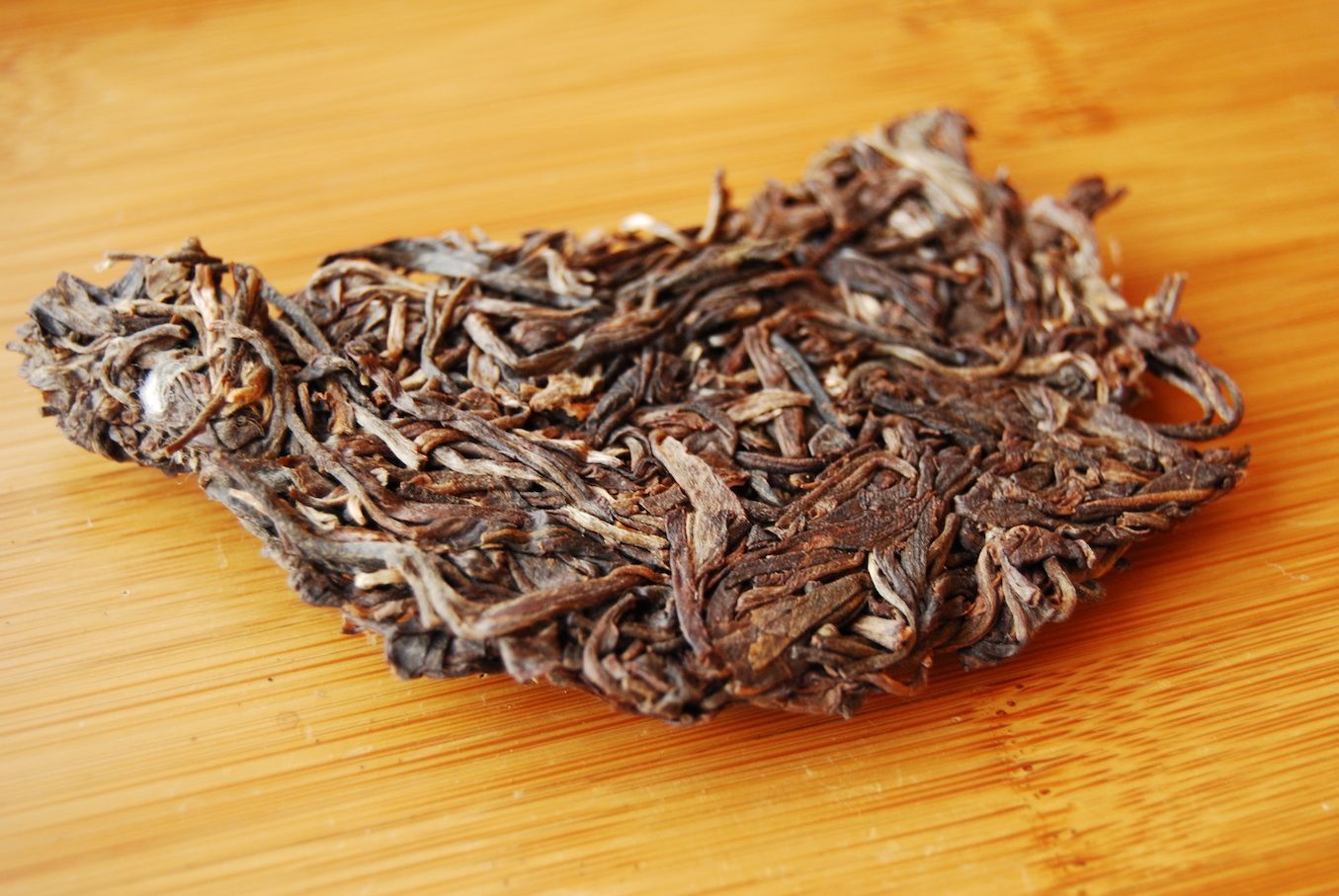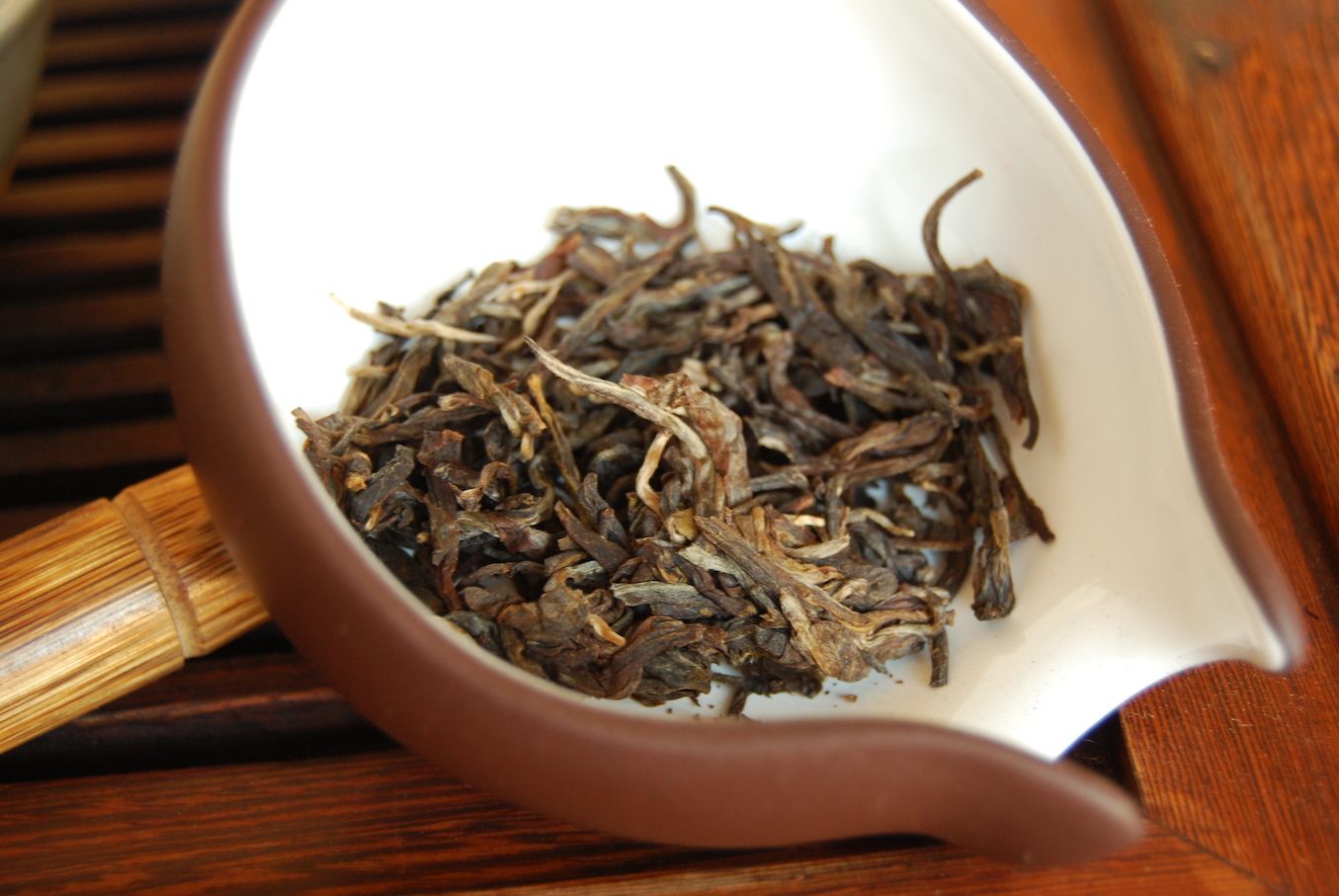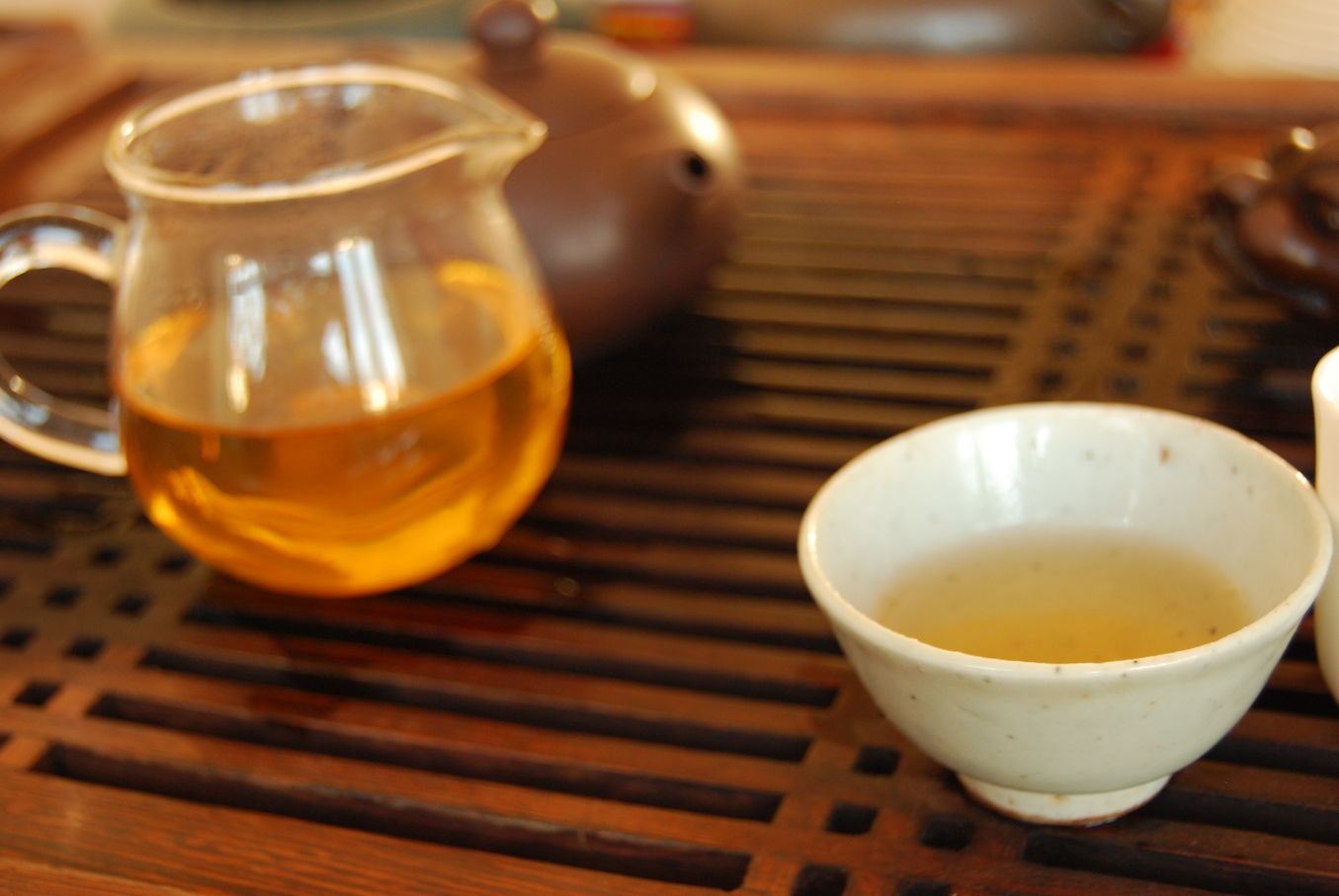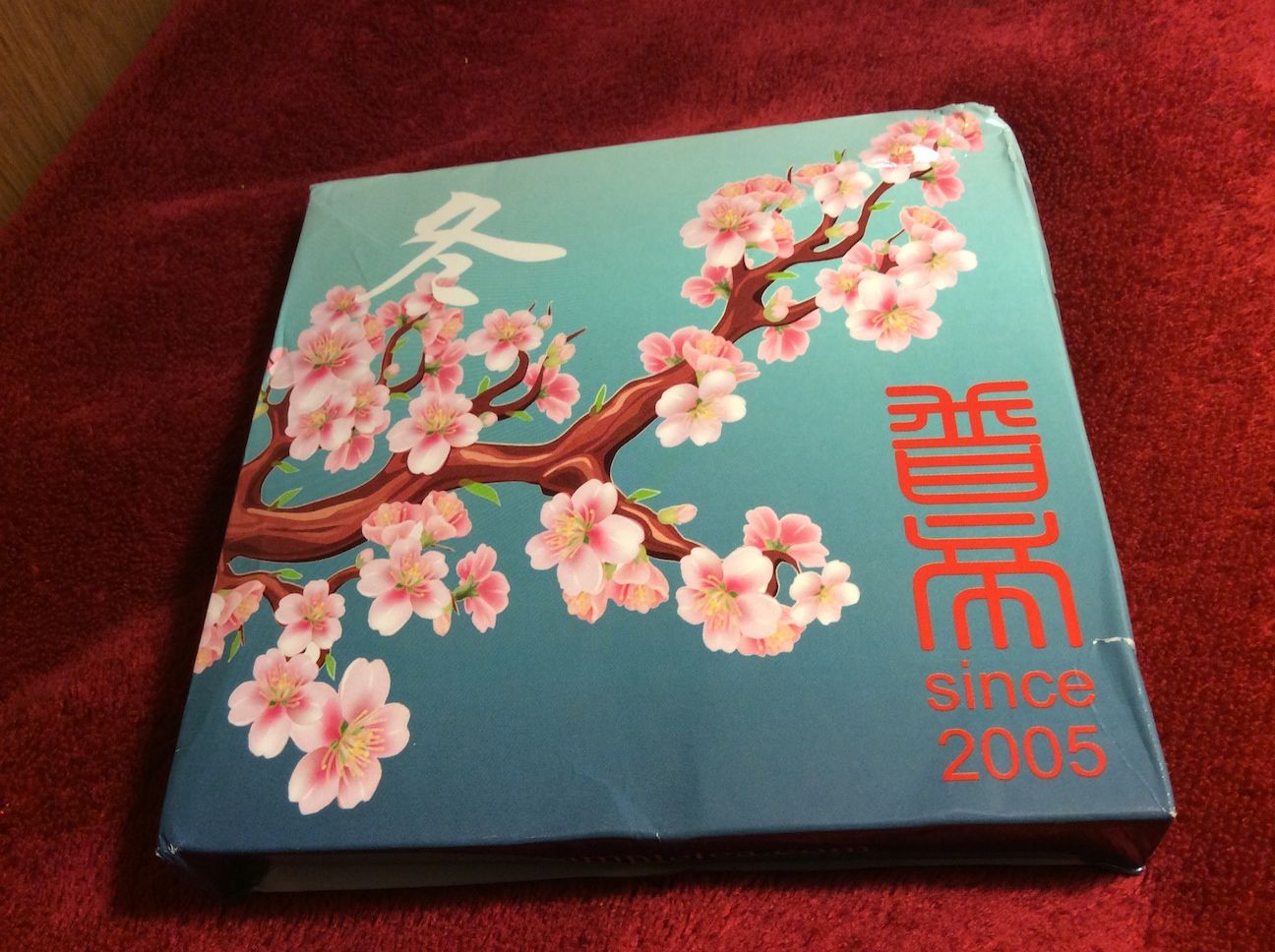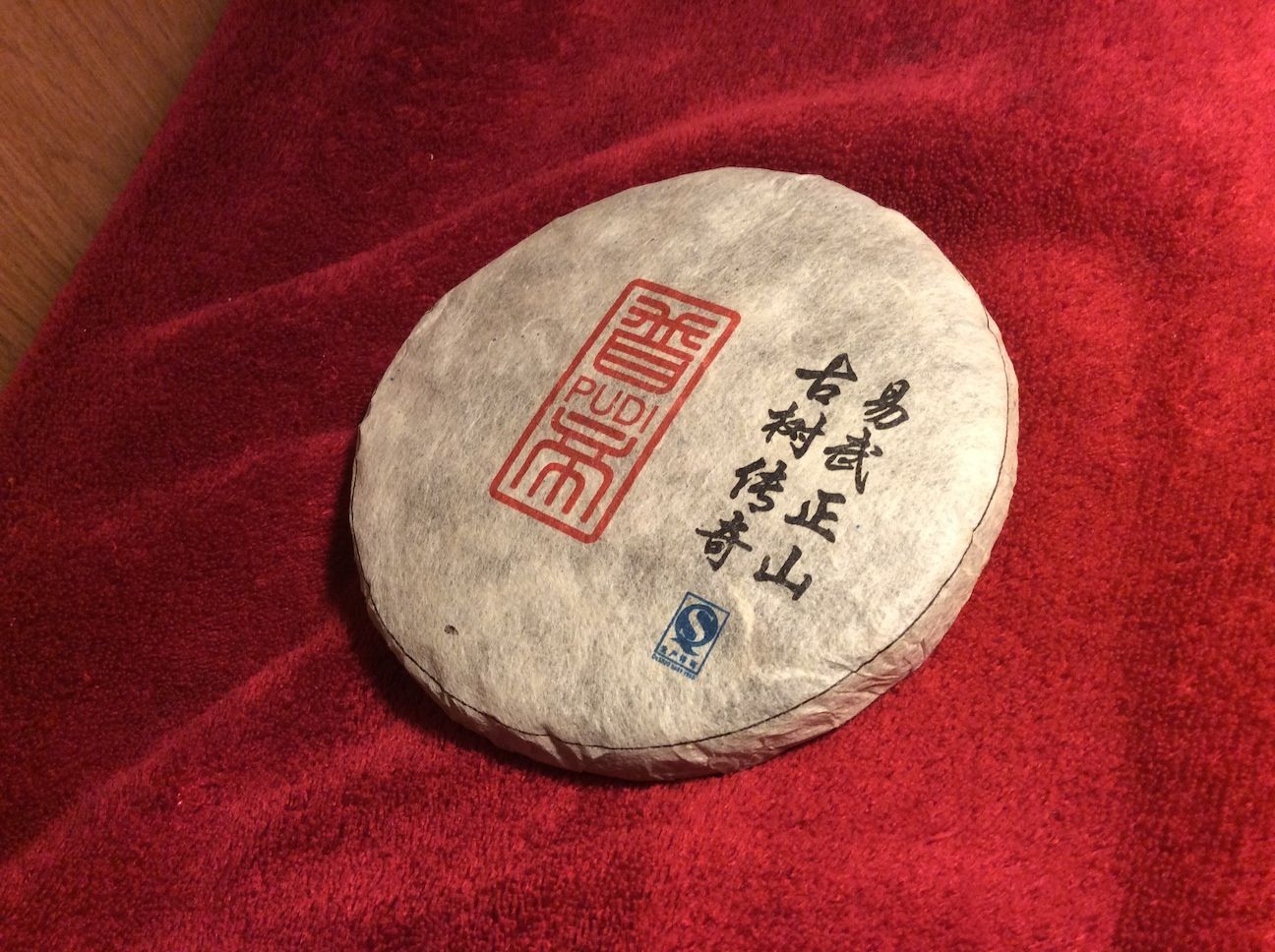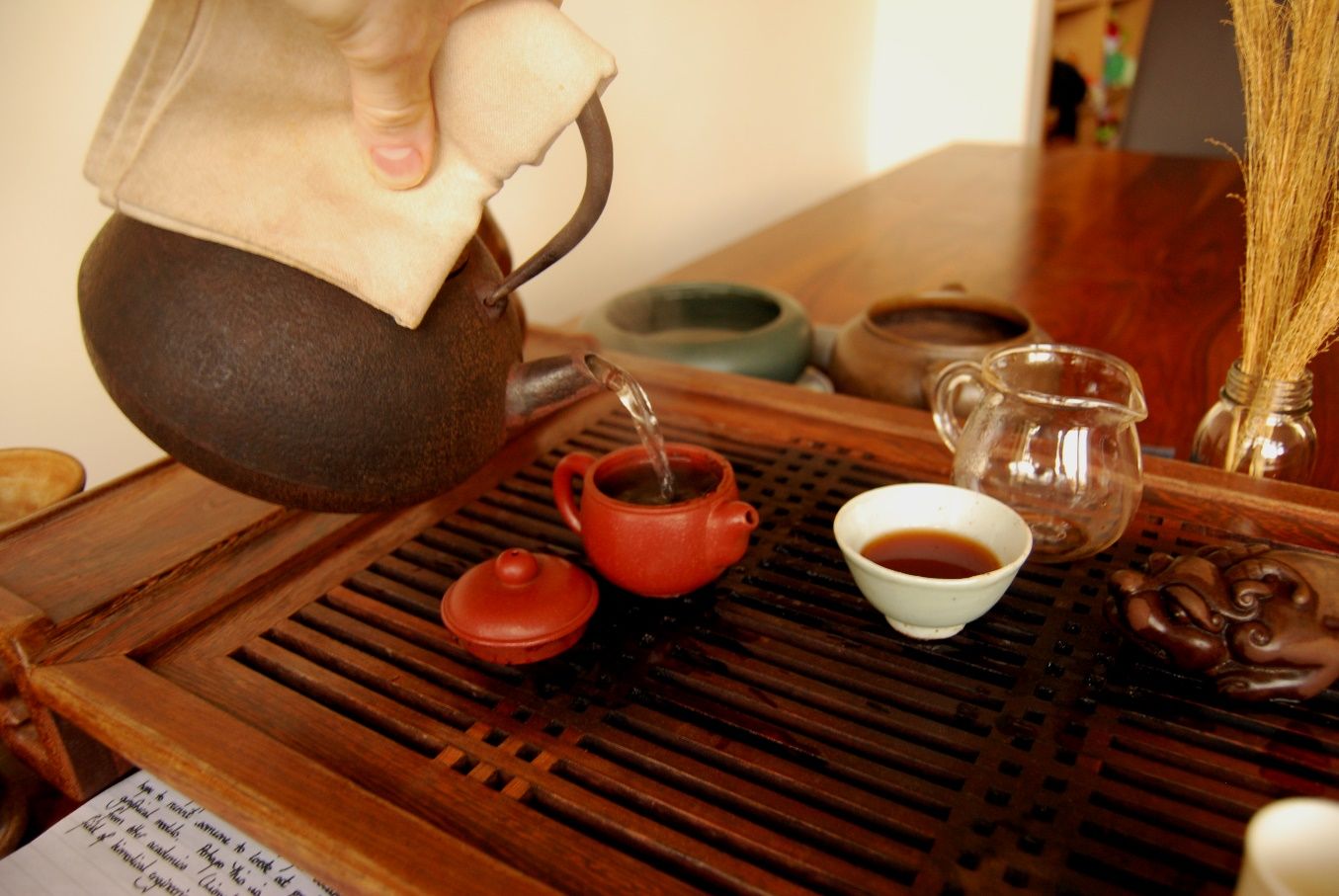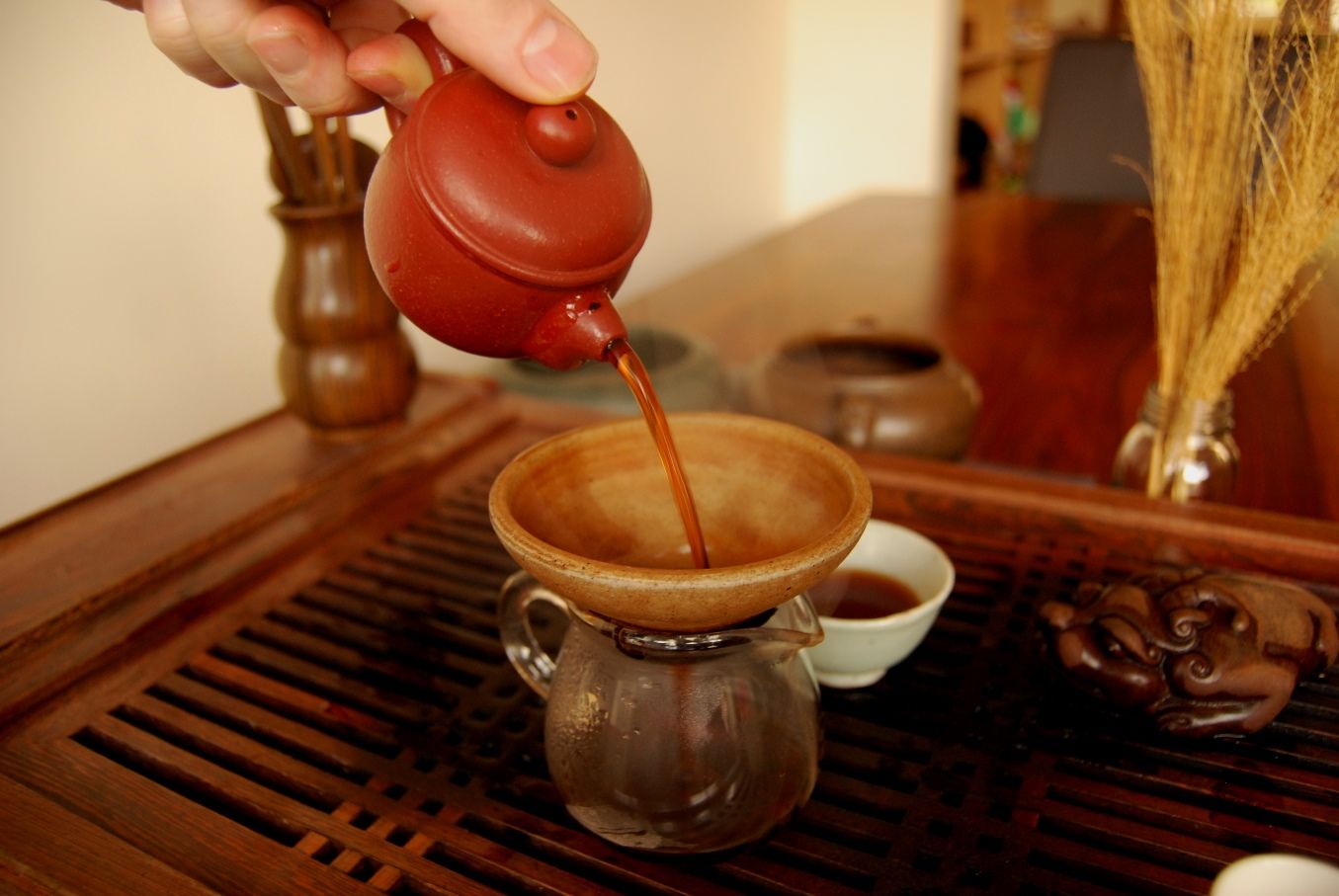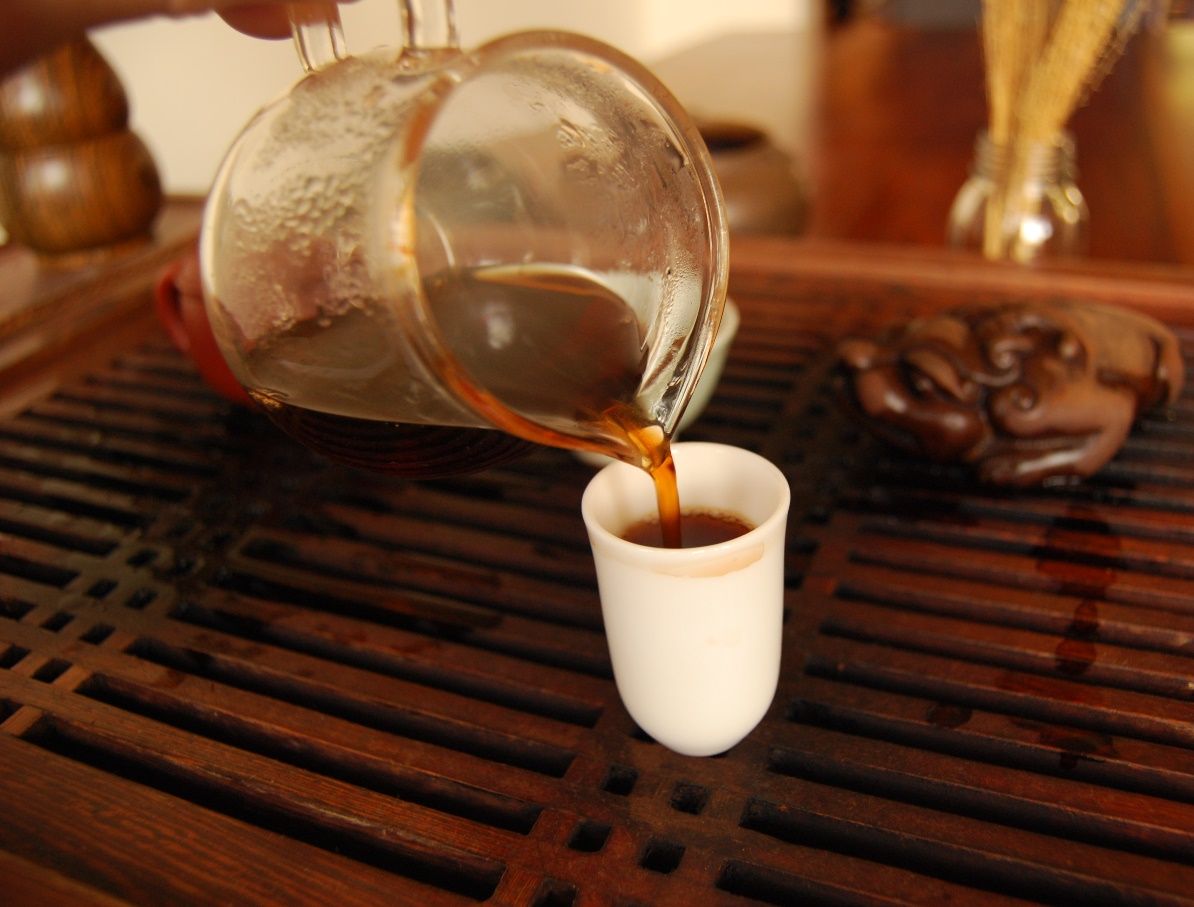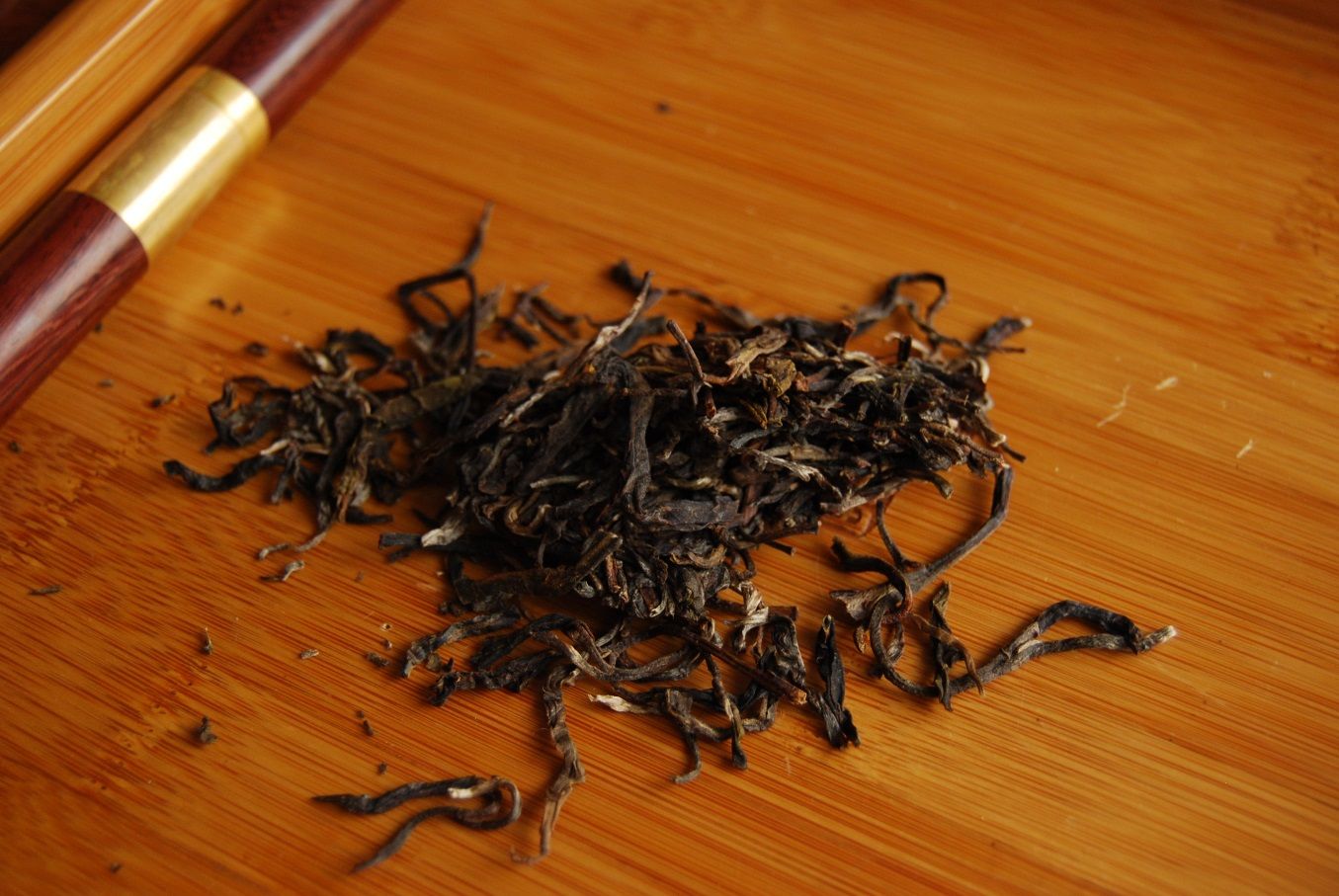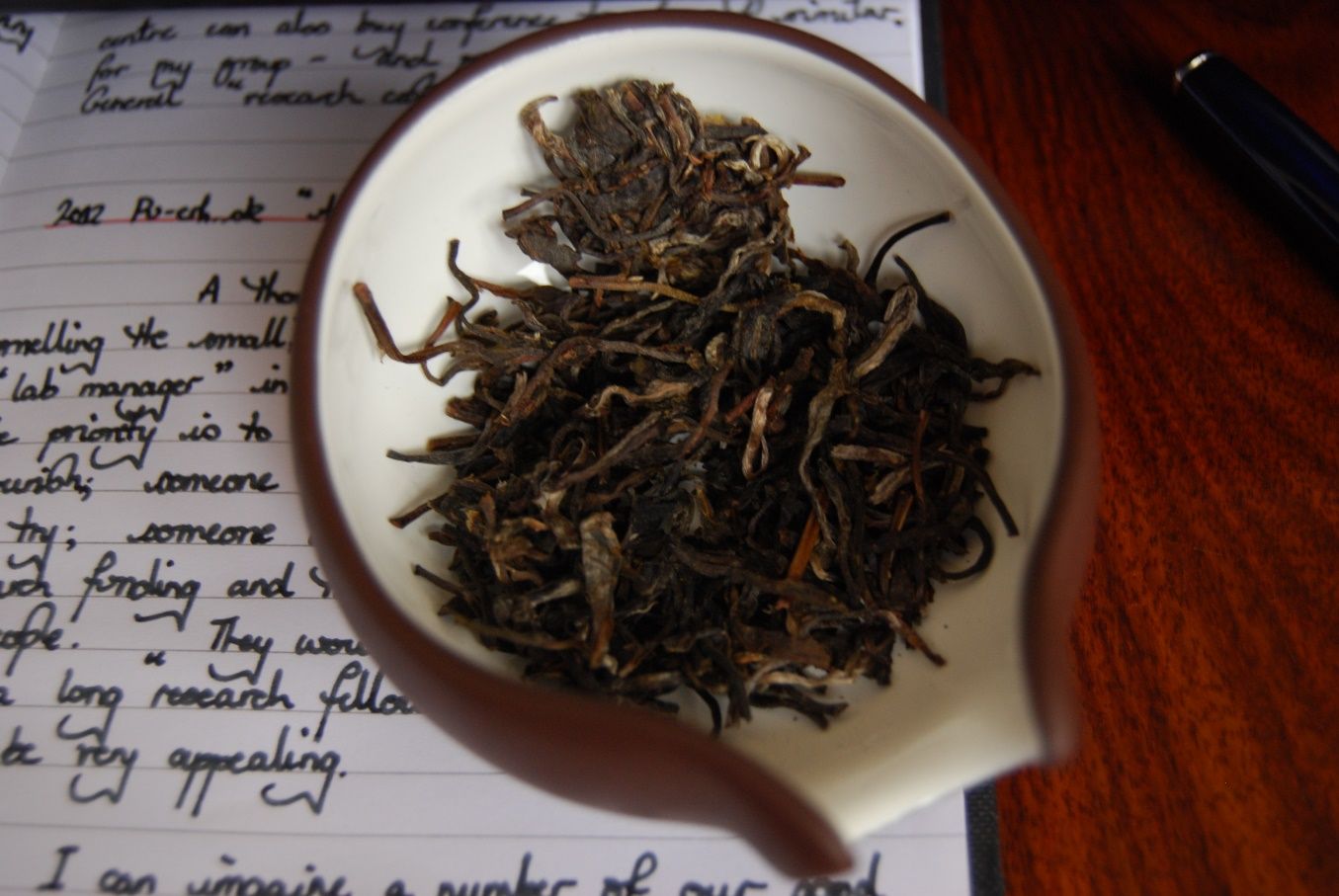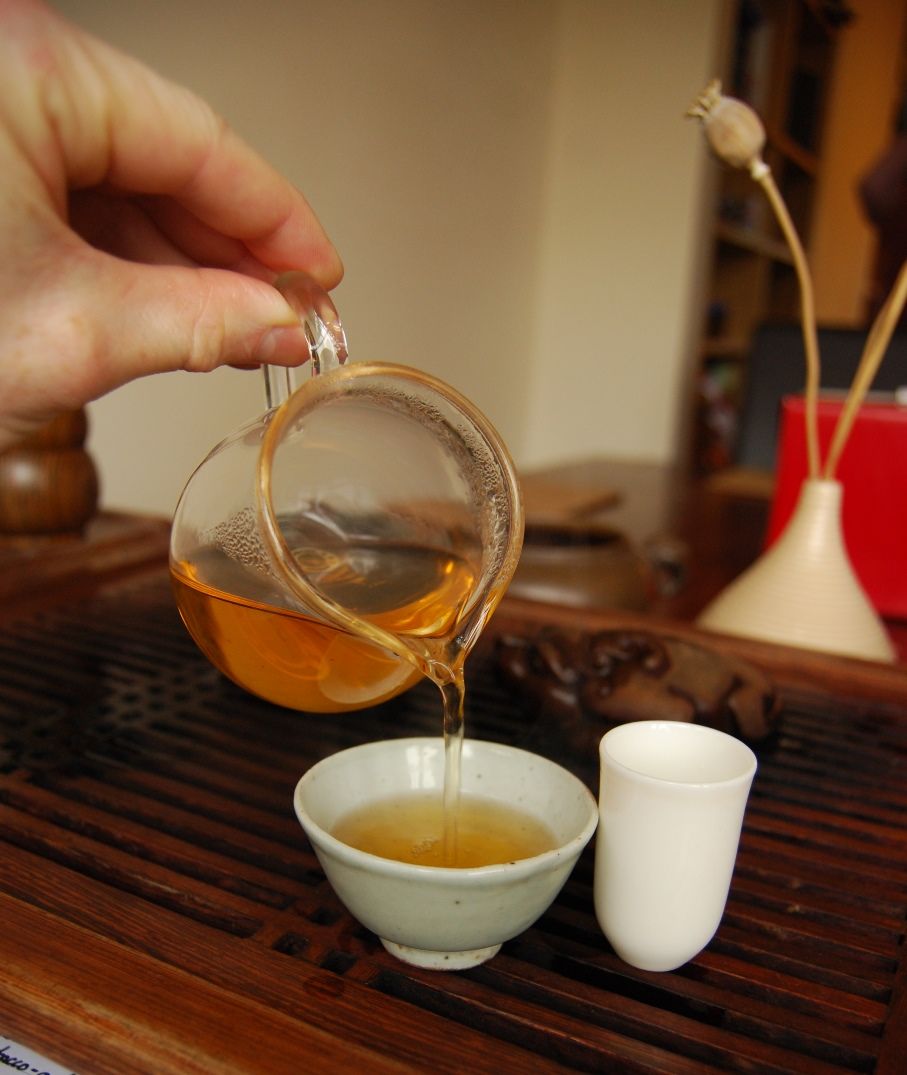One decade ago, this tea was being produced, for example. That particular summer was an especially interesting one, as far as I'm concerned, because it was then that I went to the "Neural Computing Applications Forum" and met a pretty girl whom I married one year later. So, to go back to reminiscences of that summer is very welcome.
Whom should we thank for taking us back to that summer? Jakub was the kindly provider.
My only previous encounter with the 2004 7542 was during a mammoth 7542fest, with Apache, in which we attempted to drink our way through as many different years of 7542 as we could manage. The 2004 example from that experiment was stored in Hong Kong until 2009, and was excellent. This example, from Jakub (which may have come from Finepuer or Sampletea, as the label suggests in the first photograph for this article), is clean and red, with a fresh scent that suggests minimally damp environments.
This session was most definitely "a game of two halves". The first took place in the midst of absolute chaos. I unwisely started a session while visiting family members began to kick up the mandatory fuss that accompanies such a visit. The tea didn't get a very fair roll of the dice. Later, in the quiet aftermath, I fired up the kettle for a second time - and was extremely well-rewarded.
The dark red-orange soup of the tea, pictured above, was reborn. The thrill of dense, sweet 7542 is not an exalted pleasure: rather, 7542 is strong and uncomplicated. When the house became quiet, and the visitors and children had resumed their normal states, the 7542 began to shine.
I am always impressed by the sheer longevity of well-stored 7542; it seems robust to so many variables that would otherwise damage other teas. It is like the boxer that just keeps on getting up, no matter how many times he is floored. You have to admire the endurance and stamina of a tea like this. In body, it remains thick; in kuwei [good bitterness], it remains challenging; in sweetness, it remains consistent. It's not going to win a beauty contest, but it cannot be evaluated according to those metrics. The 7542 is its own beast, and is entirely uninterested in your opinion of it.
That's something we have to appreciate.
That's something we have to appreciate.

